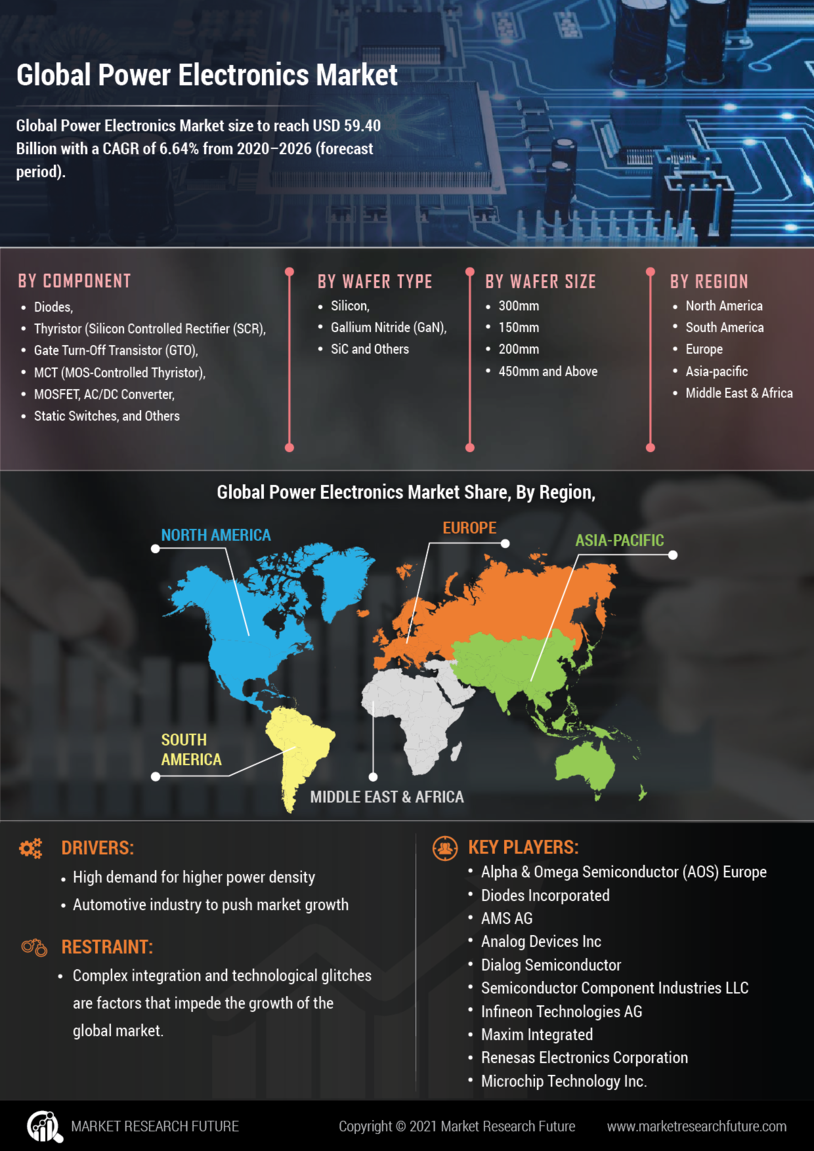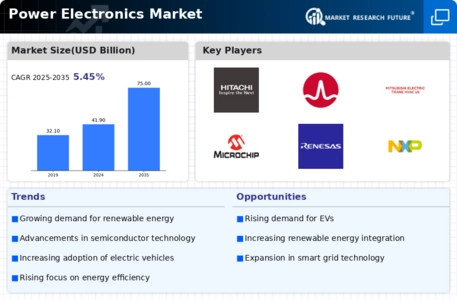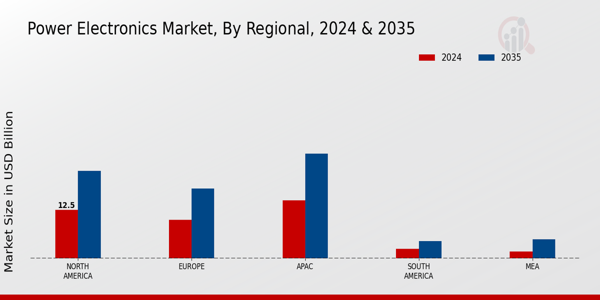Market Growth Projections
The Global Power Electronics Market Industry is poised for substantial growth, with projections indicating a market size of 41.9 USD Billion in 2024 and an anticipated increase to 75 USD Billion by 2035. This growth trajectory suggests a robust demand for power electronics across various sectors, including renewable energy, electric vehicles, and consumer electronics. The expected CAGR of 5.45% from 2025 to 2035 further underscores the industry's potential, driven by technological advancements and increasing awareness of energy efficiency. Charts illustrating this growth can provide a visual representation of the market's expansion and the factors contributing to its development.
Advancements in Electric Vehicles
The surge in electric vehicle adoption significantly influences the Global Power Electronics Market Industry. As countries strive to reduce reliance on fossil fuels, the automotive sector is rapidly transitioning towards electrification. Power electronics play a crucial role in electric vehicles, facilitating energy conversion and management within battery systems. The market is expected to witness substantial growth, with projections indicating a rise to 75 USD Billion by 2035. This growth is driven by advancements in battery technology and the increasing demand for efficient power management systems, which are essential for enhancing vehicle performance and extending range.
Expansion of Consumer Electronics
The proliferation of consumer electronics is a notable driver for the Global Power Electronics Market Industry. With the rise of smart devices, the demand for efficient power management solutions has surged. Power electronics are essential for managing energy consumption in devices such as smartphones, laptops, and home appliances. As consumer preferences shift towards energy-efficient products, manufacturers are increasingly integrating advanced power electronics into their designs. This trend is likely to contribute to the market's growth, as the demand for innovative consumer electronics continues to rise, further emphasizing the importance of efficient power management.
Growing Demand for Renewable Energy
The increasing global emphasis on renewable energy sources is a primary driver for the Global Power Electronics Market Industry. Governments worldwide are implementing policies to reduce carbon emissions and promote sustainable energy solutions. This shift towards renewables necessitates advanced power electronics for efficient energy conversion and management. For instance, the integration of solar and wind energy systems relies heavily on power electronics to optimize performance. As a result, the market is projected to reach 41.9 USD Billion in 2024, reflecting the growing investment in renewable technologies and their associated power electronics.
Increasing Demand for Energy Efficiency
The global push for energy efficiency is a significant driver of the Global Power Electronics Market Industry. Industries and consumers alike are increasingly seeking solutions that reduce energy consumption and lower operational costs. Power electronics are integral to energy-efficient systems, enabling precise control of electrical energy flow. For example, smart grids and advanced industrial automation systems rely on power electronics to optimize energy use. As energy efficiency becomes a priority, the market is expected to expand, reflecting the growing awareness of sustainability and the need for innovative power management solutions.
Technological Innovations in Power Electronics
Technological advancements in power electronics components, such as semiconductors and converters, are propelling the Global Power Electronics Market Industry forward. Innovations in materials, like silicon carbide and gallium nitride, enhance efficiency and thermal performance, enabling smaller and lighter designs. These advancements are particularly relevant in applications such as renewable energy systems and electric vehicles, where efficiency is paramount. The market is anticipated to grow at a CAGR of 5.45% from 2025 to 2035, driven by continuous research and development efforts aimed at improving power electronics technologies and their applications across various sectors.
















